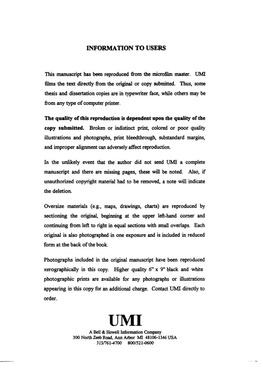| dc.contributor.author | Dharmasena, Kushlani Chandima. | en_US |
| dc.date.accessioned | 2013-08-16T12:29:30Z | |
| dc.date.available | 2013-08-16T12:29:30Z | |
| dc.date.issued | 1997 | en_US |
| dc.identifier.uri | https://hdl.handle.net/11244/5421 | |
| dc.description.abstract | We observed Resonance Enhanced Multiphoton Ionization (REMPI) spectra of $nf\sp2\Pi\sb{\Omega}$ Rydberg states of $CO\sb2$ for $n=4$ to 8. In addition, we also did a laser power dependence study of these states for $n=5$ to 7. We compared our results to two other studies by Johnson and coworkers and Dobber and coworkers. | en_US |
| dc.description.abstract | In the present study we observed that dissociation rate increased with increasing frequency. Also, we observed a clear difference in rates of dissociation for the two spin-orbit components of each nf state. This difference was not consistent, in some states the $\Omega=1/2$ component dissociated more while in the others $\Omega=3/2$ dissociated more. When comparing with Dobber and coworkers' REMPI-Photoelectron Spectra (REMPI-PES), a good correlation between the observed symmetric vibrational progressions and our dissociation rates was noticed. We also found that these rates stayed remarkably constant for different powers of the laser even though the production of $CO\sp+$ ions required more photons than $CO\sbsp{2}{+}$ ions. From this observation we came to the conclusion that the two-photon transition was saturated. What was surprising was, the amount of $CO\sbsp{2}{+}$ ions observed despite the fact that the two-photon transition X $\sp2\Pi\sb{g}\to\to{\rm C}\sp2\Sigma\sbsp{g}{+}$ was saturated. The observed ratio of $CO\sp+/CO\sbsp{2}{+}$ ratio never was lower than 6. These observations led us to believe that $CO\sp+$ ions were predominantly made by predissociation rather than direct dissociation. We propose that the two-photon transition is X $\sp2\Pi\sb{g}\to\to{\rm C}\sp2\Sigma\sbsp{g}{+}$ followed by predissociation of the $C\sp2\Sigma\sbsp{G}{+}$ state. In our model, predissociation must occur through a potential barrier in the C$\sp2\Sigma\sbsp{g}{+}$ state which is on the order of an electron volt above the dissociation limit. We estimated the mean lifetime of this state to be about 600 psec by using the ratio of $CO\sp+/CO\sbsp{2}{+}$ from our spectra. | en_US |
| dc.description.abstract | This model explains two other phenomena observed in REMPI spectra. First is the observation of increased dissociation with increasing principal quantum number in the nf Rydberg states. The second is the lower dissociation rate observed in Dobber and coworkers' spectra for picosecond laser compared to the nanosecond laser. | en_US |
| dc.format.extent | xviii, 150 leaves : | en_US |
| dc.subject | Multiphon processes. | en_US |
| dc.subject | Photoionization. | en_US |
| dc.subject | Physics, Molecular. | en_US |
| dc.subject | Carbon dioxide Spectrum analysis. | en_US |
| dc.title | Effects of non-adiabatic coupling in photofragmentation of CO(2) using resonance enhanced multiphoton ionization techniques. | en_US |
| dc.type | Thesis | en_US |
| dc.thesis.degree | Ph.D. | en_US |
| dc.thesis.degreeDiscipline | Homer L. Dodge Department of Physics and Astronomy | en_US |
| dc.note | Source: Dissertation Abstracts International, Volume: 58-01, Section: B, page: 0259. | en_US |
| ou.identifier | (UMI)AAI9719648 | en_US |
| ou.group | College of Arts and Sciences::Homer L. Dodge Department of Physics and Astronomy | |
